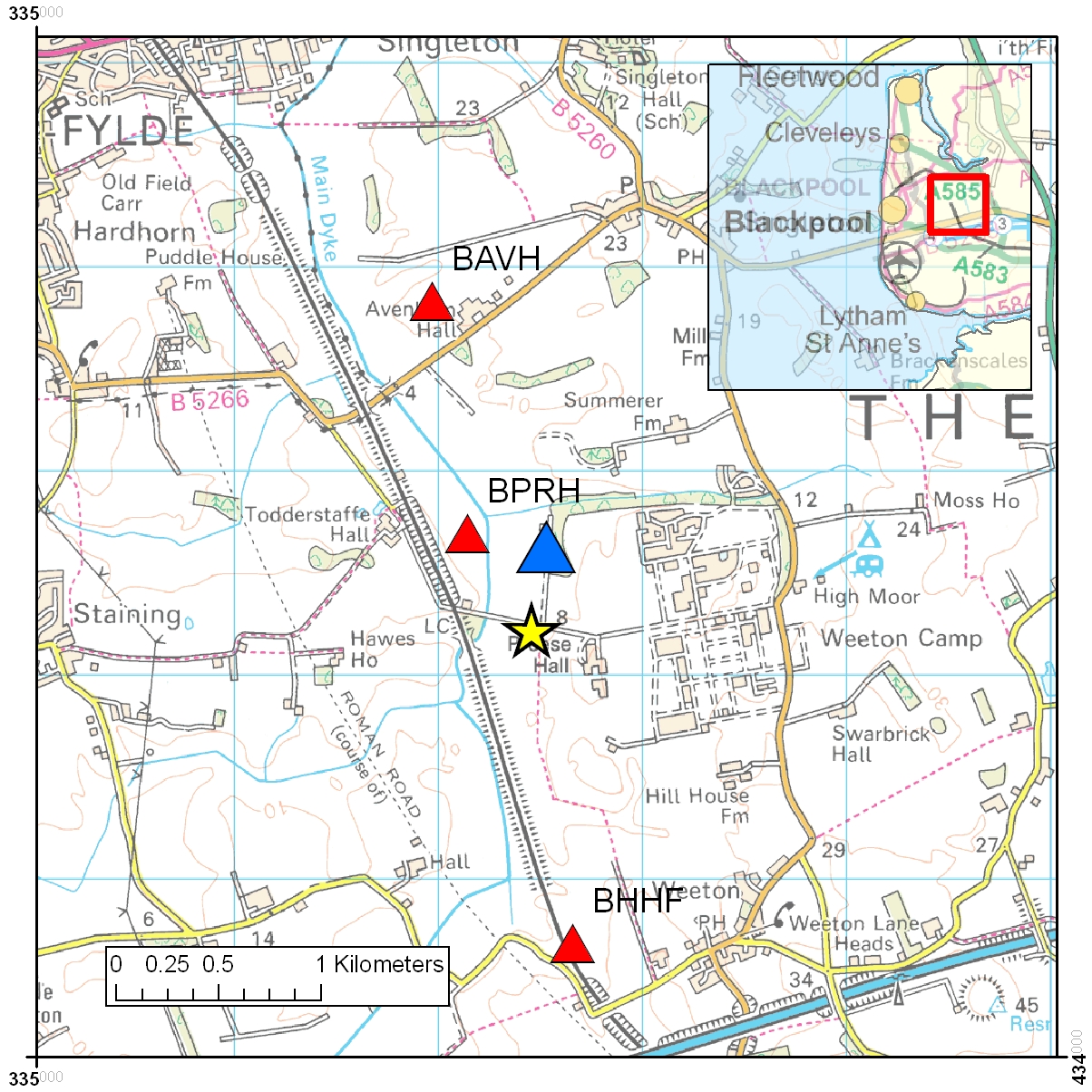Fracking and Earthquake Hazard
A REPORT PUBLISHED BY DECC that includes a BGS co-author concludes that the earthquakes near Blackpool in April and May 2011 were induced by hydraulic fracture treatments at the Preese Hall well (PH1), operated by CUADRILLA RESOURCES LTD. The report also concludes that further small earthquakes cannot be ruled out, however the risk from these earthquakes is low, and structural damage is extremely unlikely.
The report also recommends a number of measures to reduce the likelihood of earthquakes associated with hydraulic fracturing in future. These include :
- Less fluid should be injected during future hydraulic fracture treatments. Since, the number of earthquakes should increase roughly proportionally to the injected volume, injecting less fluid should reduce the probability of larger earthquakes. Also,the fluid should be allowed to 'flow back' out of the formation after the hydraulic fracture forms, to minimise the probability of fluids percolating.
- Earthquake activity should be carefully monitoring before, during and after fracture treatments. If any earthquakes above a certain magnitude threshold occur, the operations should be temporarily suspended. A magnitude of 0.5 ML is suggested as an appropriate threshold. Such a TRAFFIC LIGHT SYSTEM is based on extensive experience in Enhanced Geothermal Systems (EGS)
- Detailed MICROSEISMIC MONITORING should be carried out for the next hydraulic fracture treatment in the Bowland shale. Microseismic is routinely used in the oil and gas industry to image fracture networks and estimate stimulated volumes. This should improve understanding of fracture growth and the hazards associated with this.
Background
On 1 April and 27 May 2011, two earthquakes with magnitudes of 2.3 ML and 1.5 ML were detected in the Blackpool area. These earthquakes were immediately suspected to be linked to hydraulic fracture injections at the Preese Hall well, operated by Cuadrilla Resources Ltd. This well was hydraulically fractured during exploration of a shale gas reservoir in the Bowland basin. As a result of the earthquakes, operations were suspended at PH1 and Cuadrilla Resources commissioned a number of studies into the relationship between the earthquakes and their operations.
Is the Earthquake Activity at Preese Hall Unique
There are numerous examples of induced earthquakes in hydrocarbon fields (e.g. SUCKALE, 2010) and Enhanced Geothermal Systems (e.g. MAJER ET AL, 2007). Induced micro-seismicity during hydraulic fracture treatment is commonly used to image fracture networks and estimate stimulated volumes. Magnitudes of the earthquakes during hydraulic fracture stimulation in reservoirs such as the Barnett Shale are typically less than 1 ML. This suggests that the earthquake activity observed at Preese Hall is rather unusual.
However, both the tectonic history and the present-day STRESS REGIME in the British Isles is rather different to many of these areas of exploration and production. Also, it should be noted that many US shale gas plays are in relatively remote locations, with no monitoring networks in place. A recent study by HOLLAND (2011) suggests that hydraulic fracturing induced seismicity may be a potential issue for other reservoirs. There are also examples of seismicity induced by fluid disposal in deeper wells (e.g. FROHLICH ET AL., 2011).

- A Comparison of the Folkestone and Market Rasen Earthquakes
- Revised Seismic Hazard Maps for the UK
- Seismogenesis and State of Stress in the UK
- Monitoring Volcanic Eruptions Using Interferometry
- Particular events
- Are yesterday's earthquakes tomorrow's disasters?
- Creating 'virtual seismometers' deep inside the Earth
- Fault line living
- Is earthquake activity related to the Moon or Sun?
- Is earthquake activity increasing?
- DOWNLOAD THE REPORT FROM DECC
- Reports commissioned by Cuadrilla Resources into the earthquake activity
- British Geological Survey Shale Gas Project
- Majer et al, 2008. Protocol for induced seismicity associated with enhanced geothermal systems.
- Holland, 2011. Examination of Possibly Induced Seismicity in the Eola Field, Oklahoma, Oklahoma Geological Survey Open File Report OF1-2011
- Frohlich et al, 2011. The Dallas–Fort Worth Earthquake Sequence, Bull. Seism. Soc. Am., 101, 327-340
- Suckale,2010. Moderate-to-large seismicity induced by hydrocarbon production, The Leading Edge, 29, 310-314.
- Majer et al, 2007. Induced seismicity associated with Enhanced Geothermal Systems, Geothermics, 36, 3, 185-222.



